The game of Monopoly has the following properties, which are priced at the amount listed below:
Dark Purple: Mediterranean Avenue ($60), Baltic Avenue ($80)
Light Blue: Oriental Avenue ($100), Vermont Avenue ($100), Connecticut Avenue ($120)
Light Purple: St Charles Place ($140), States Avenue ($140), Virginia Avenue ($160)
Orange: St James Place ($180), Tenessee Avenue ($180), New York Avenue ($200)
Red: Kentucky Avenue ($220), Indiana Avenue ($220), Illinois Avenue ($240)
Yellow: Atlantic Avenue ($260), Ventnor Avenue ($260), Marvin Gardens ($280)
Green: Pacific Avenue ($300), North Carolina Avenue ($300), Pennsylvania Avenue ($320)
Dark Blue: Park Place ($350), Board walk ($400)
Your assignment is to capture the data related to the rents earned with no houses, 1 house, 2 houses, 3 houses, 4 houses, and a hotel, and answer the following questions, assuming that over the course of the game any one property is just as likely to be landed on as any other:
1. Which color groups have the highest yields?
2. How much better is it, on average, to build on the first property in a color group vs. the last (For example, St Charles Ave. vs. Virginia Ave or St. James Place vs. New York Ave)?
3. On average, how much do rents increase by adding the first house, second house?
4. In a well written paragraph, explain any insights you’ve developed and how you might play the game differently, the next time you play it.
5. Assuming you have the cash, why might you prefer not to build a hotel?
Submit your answers printed, with all supporting data.

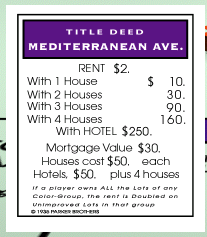

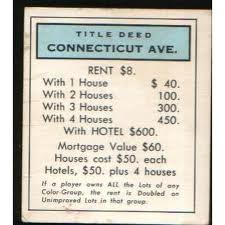
Light Purples
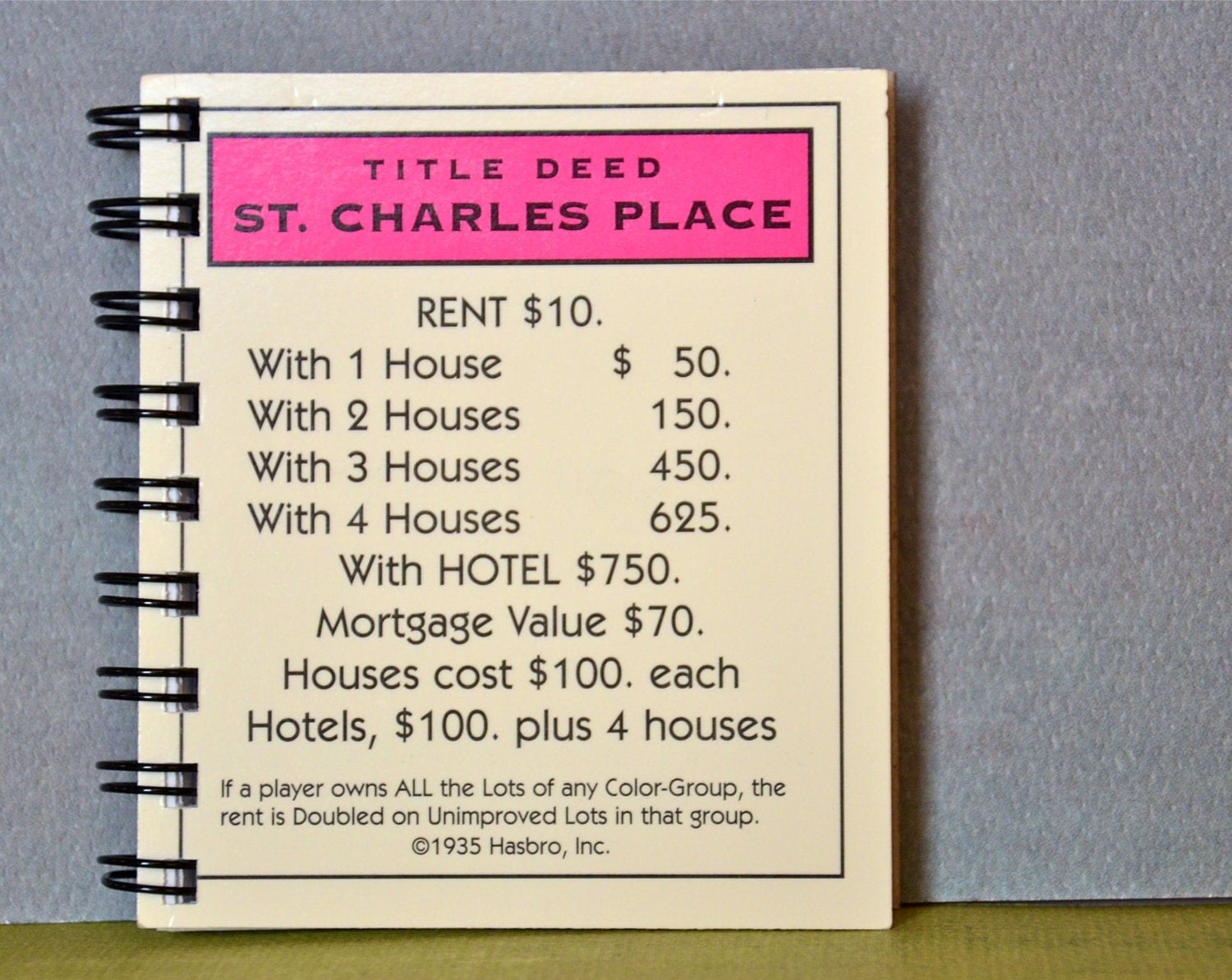
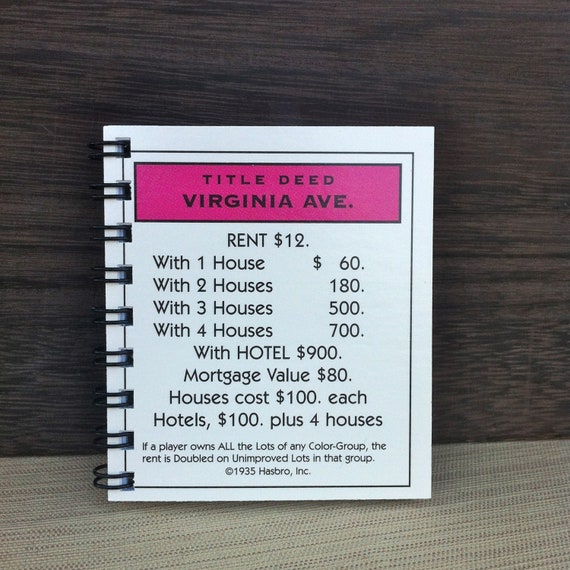
Oranges
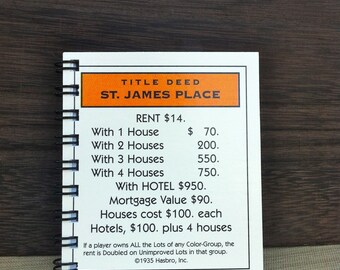
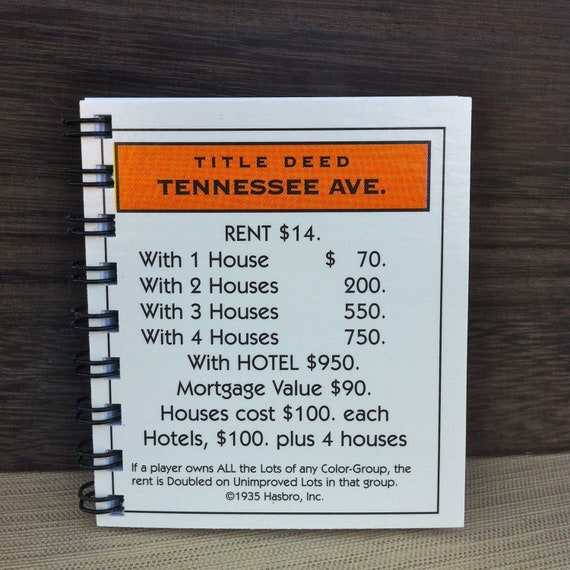
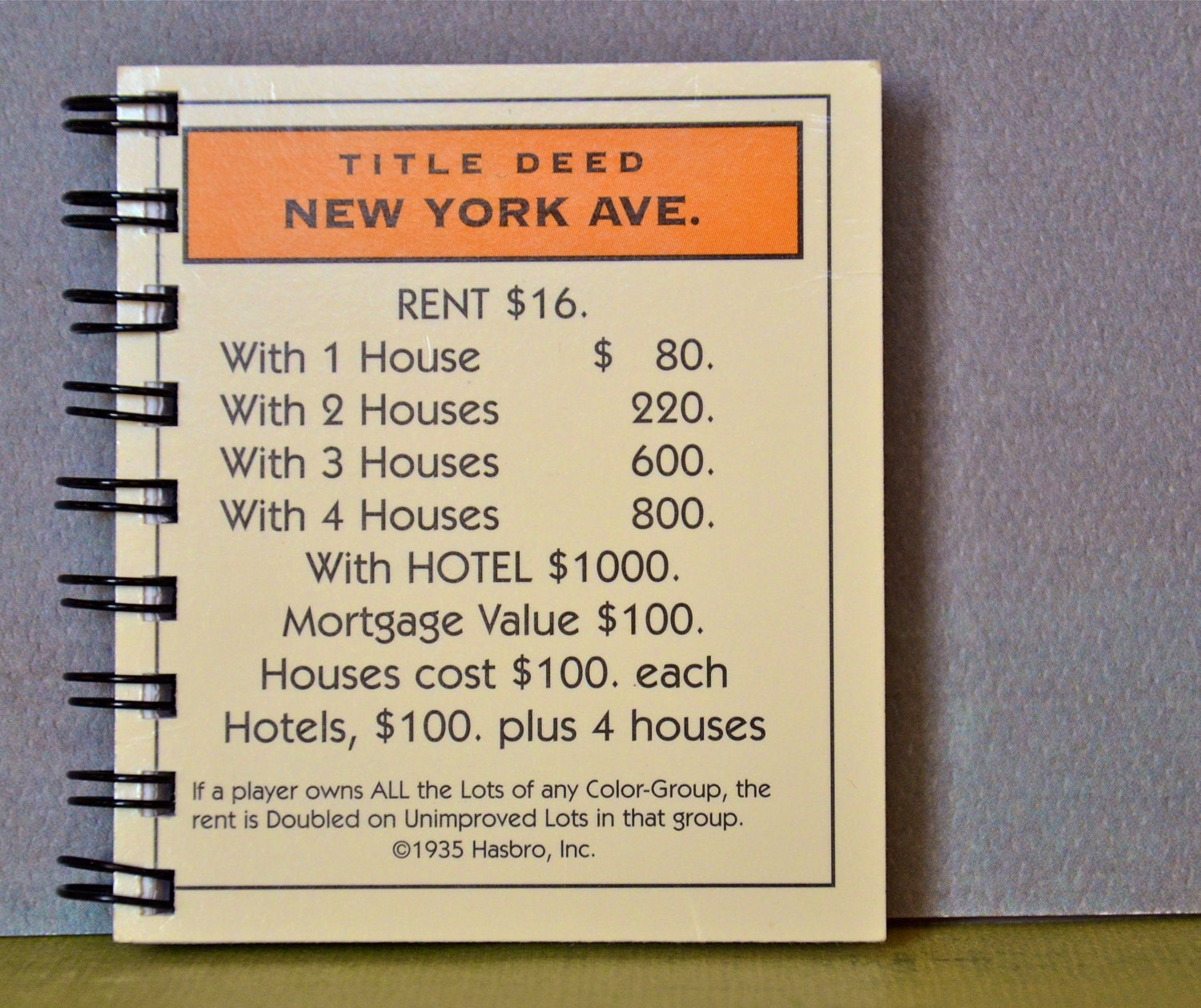




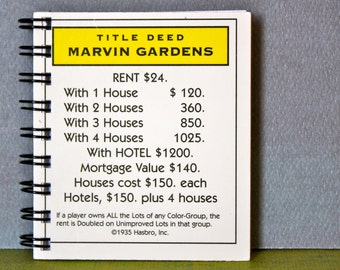
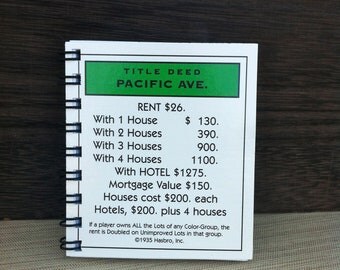

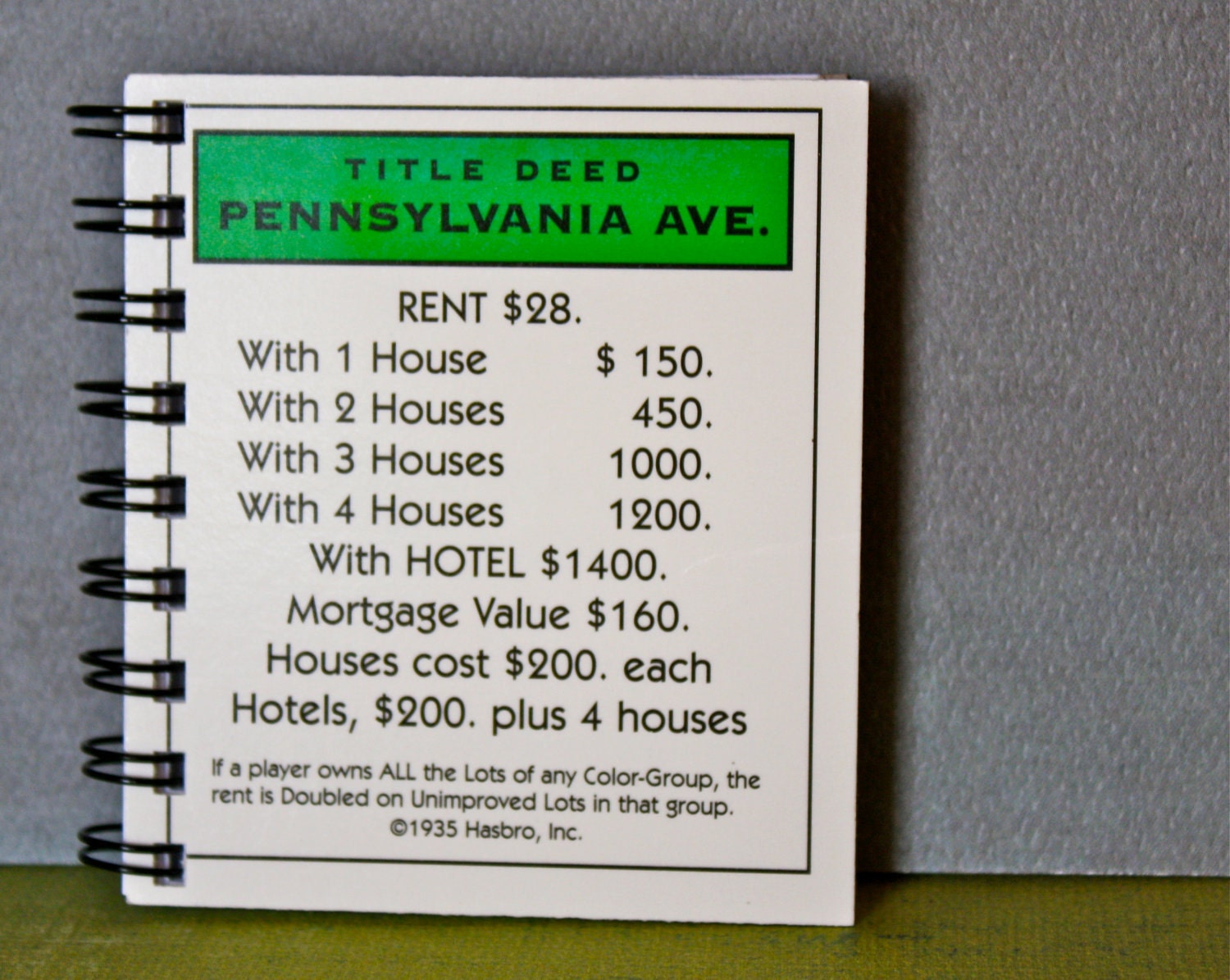
Dark Blues
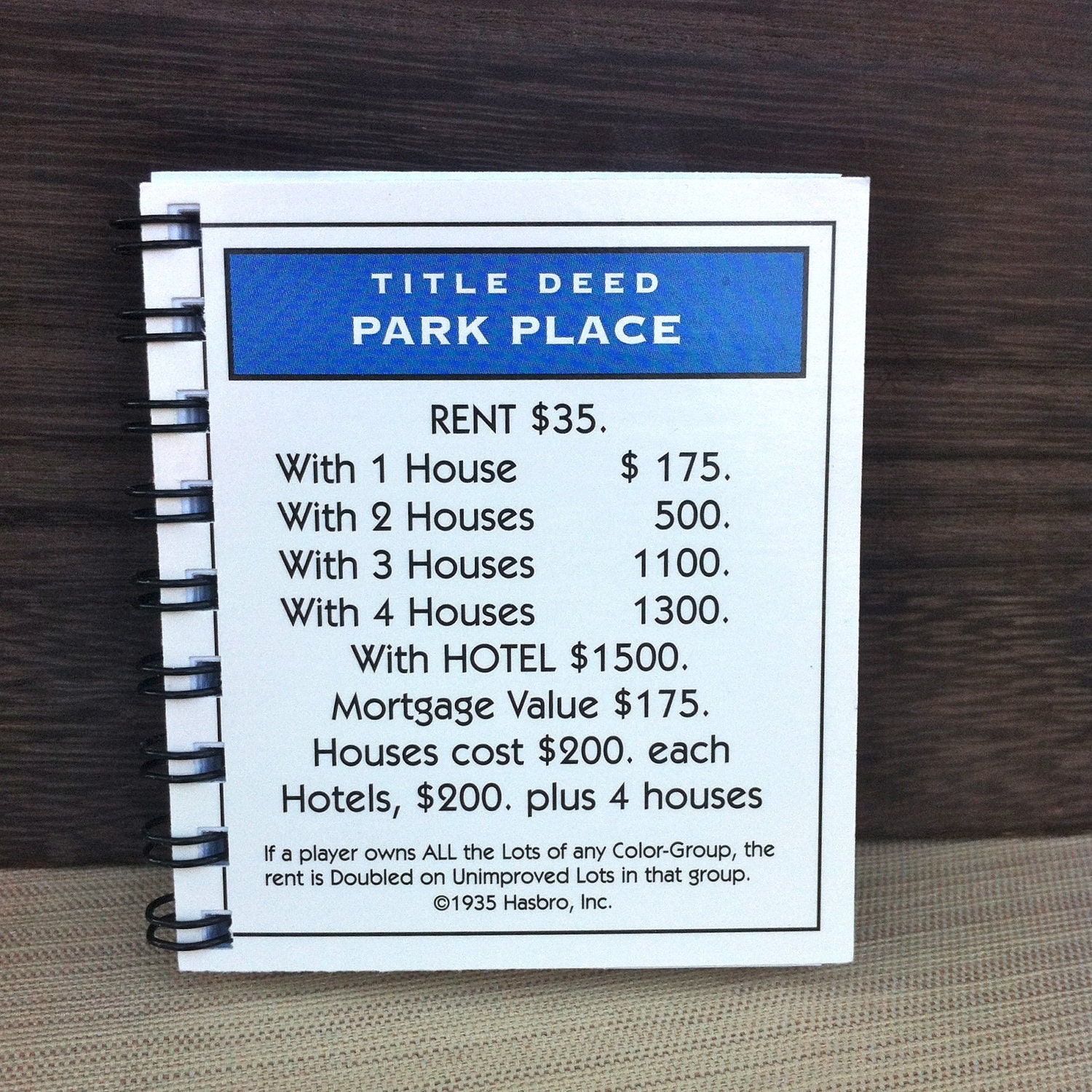
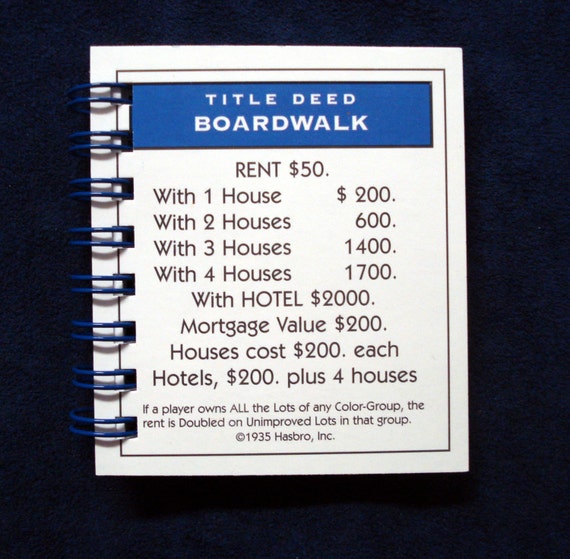

I believe Light Purple – States Avenue is missing?
LikeLike
It is missing, but you can easily google a picture of the card to get the information.
LikeLike
LikeLiked by 1 person
How would you calculate yield based off of the color groups?
LikeLike
For any single property, let’s define the “rental yield” as the rent divided by the purchase price. The “one house yield” would be what you get when someone lands on the property with one house divided by the amount you paid for the property plus the house.
LikeLike
Should we be taking into consideration the number of people landing on the properties? If only one person lands on each property, the cost is always higher than the return no matter how many houses/hotels are built.
LikeLike
I’d make the simplifying assumption that all properties have the same probability of being landed on.
LikeLike
What do “with 1 house”, “with 2 houses” … mean? Sorry, can’t find clear explanation online.
LikeLiked by 1 person
In the game if you have on a property without a house, you pay rent. If the other of the property has paid extra to put a house or two or a hotel on r property, you will pay more when you land on it.
LikeLike